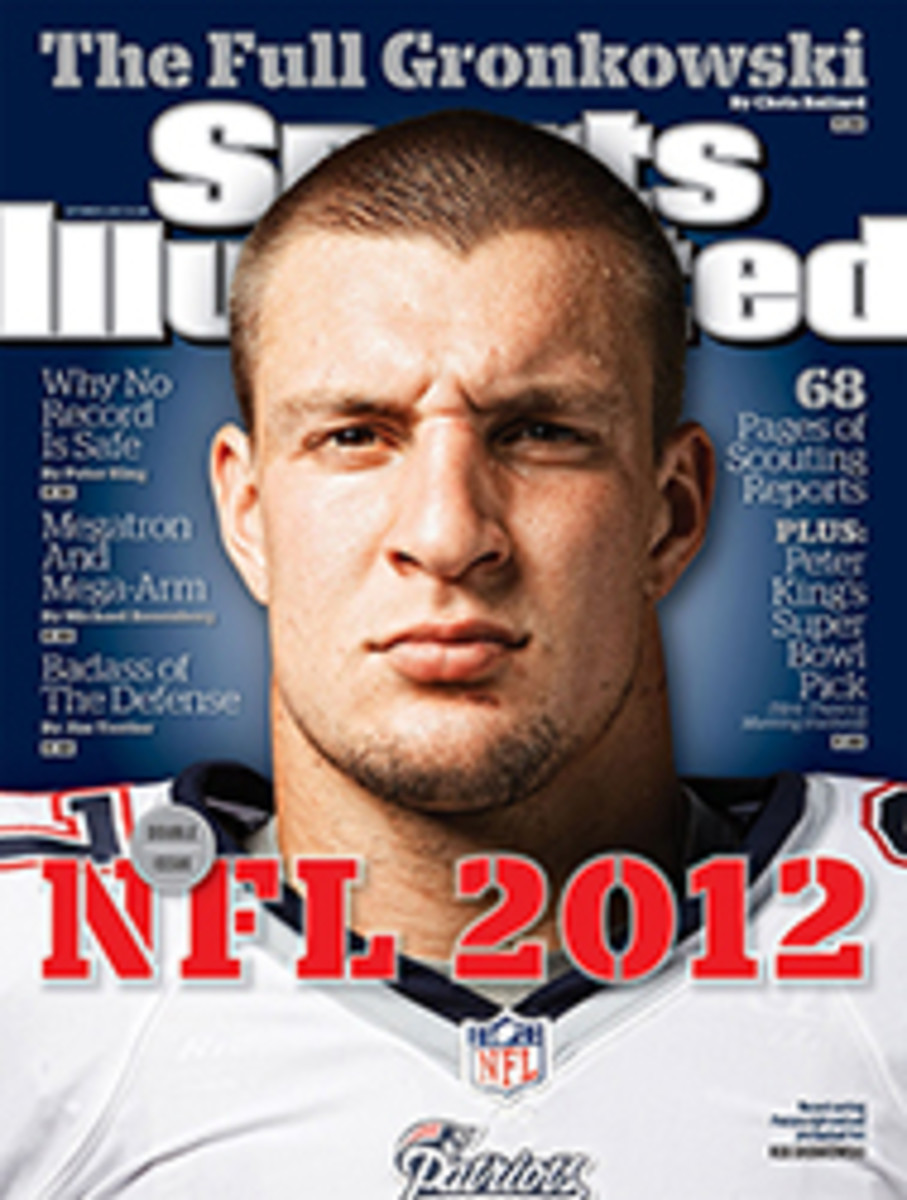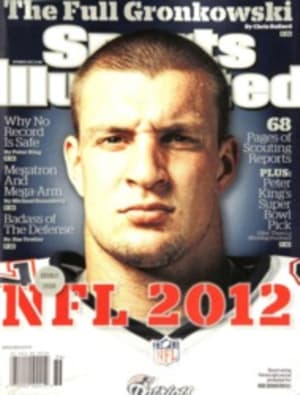
4 OAKLAND: Raiders
CARSON PALMER is sitting on a black-leather bench in the Raiders' outdoor weight room. The team is a week into training camp, and Palmer looks lean, healthy and at peace. He is making small talk about the joys of full-time California living after eight-plus years as a Cincinnati Bengal. The only negative? He chuckles and laments his difficulties finding open restaurants late Sunday nights in San Francisco.
Palmer is not so playful when the discussion turns to the 2012 season. There is so much he wants to accomplish, and he knows his time is growing short. He will be 33 by the end of the season, and no one has to remind him that he has been in just two playoff games, both defeats, since he was drafted No. 1 overall by the Bengals in 2003.
"Quarterbacks are judged on wins and losses, I know that as well as anybody," Palmer says. "That's what I'm focused on this year. There are no statistical goals, no numbers that I want to hit that are going to make me happy. It's all about winning. You can throw for a zillion yards, but if you're 8--8 and out of the playoffs, that's not a successful year. I feel I have three good years left in me, and I'm driven to make it happen."
He appeared to be in a great position last year after an October trade sent him from Cincinnati to Oakland. The Raiders entered December with a 7--4 record and a one-game lead in the AFC West. Five weeks later they were 8--8 and out of the playoffs for the ninth consecutive year.
Now they have a new general manager (Reggie McKenzie, a onetime Raiders linebacker), a new coach (Dennis Allen, the Broncos' defensive coordinator last year) and a new offense. For the first time in Palmer's career he is stepping into an attack that is not pocketcentric, meaning he'll have more launch points behind the line of scrimmage and more chances to throw on the run. That's not to say he's being asked to make like Michael Vick, whom coordinator Greg Knapp coached in Atlanta. Think along the lines of Matt Schaub, with whom Knapp worked over the past two years as the quarterbacks coach in Houston.
"Matt has similar athletic ability and size to Carson, and he ran the offense very effectively," Knapp says. "This offense is very effective in the sense that defenses can't identify where [the quarterback] is going to be every time. Sometimes he's releasing from behind the guard, sometimes he's behind the tackle. It creates a lane for the quarterback to see downfield for the deep passes."
But who'll be catching those balls? The Raiders' wideouts are talented but inconsistent. Denarius Moore, a 2011 rookie with whom Palmer developed a quick rapport last year, missed much of camp with a hamstring issue, and Jacoby Ford, a big-play threat who averaged 18.8 yards per catch two years ago, may be slowed early by a sprained left foot. Darrius Heyward-Bay, the 2009 first-rounder, led the club in receiving in 2011 but is better-suited for a complementary role. Rookies Rod Streater and Juron Criner have potential but lack experience.
"They're all hungry, and they all enjoy the work," Palmer says. "They all want to get better, and they ask me a million questions."
Much of Oakland's fate will turn on the health of standout running back Darren McFadden, who is one of the game's best when healthy but who has been limited by injuries to seven or fewer starts in three of his first four seasons. When he rushed for at least 100 yards the past two seasons, the Raiders were 6--2. When he didn't, they were 4--8.
But let there be no doubt: It is Palmer who'll be in the crosshairs. While he averaged a career-best 275.3 yards per game in his 10 games with the Raiders last year, his interception rate of 4.9% (16 picks in 328 attempts) was also a career high. So he is out to prove he is still a franchise quarterback. "I'm probably as hungry as I've ever been for a season," he says. "I feel like this is really my first year here. It's easy to say you don't pay attention to all the naysayers, but you hear them. Every quarterback does. It's certainly driven me and gotten me excited. Winning our division and making a run in the playoffs and playing in the Super Bowl is what appeases your appetite. That's what I'm looking to do."
Projected Lineup
WITH 2011 STATS
OFFENSE 2011 RANK: 9
[originallink:10885721:1009553]
(N) New acquisition
(R) Rookie—College stats
TTD Total touchdowns
OFFENSIVE LINEMEN
SACKS Sacks allowed
HOLD Holding penalties
FALSE False starts
SCHEDULE
2011 Record: 8--8
SEPTEMBER
10 San Diego (Mon)
16 at Miami
23 Pittsburgh
30 at Denver
OCTOBER
7 BYE
14 at Atlanta
21 Jacksonville
28 at Kansas City
NOVEMBER
4 Tampa Bay
11 at Baltimore
18 New Orleans
25 at Cincinnati
DECEMBER
2 Cleveland
6 Denver (Thu)
16 Kansas City
23 at Carolina
30 at San Diego
SPOTLIGHT
Ron Bartell
Cornerback
First-year G.M. Reggie McKenzie inherited a fiscal mess when he came over from Green Bay (where he was director of football operations). The Raiders were further over the salary cap than any other team, compelling McKenzie to trim the roster with a machete rather than a scalpel. Among the cuts were Stanford Routt and Chris Johnson, the club's 2011 opening-day starters at cornerback. McKenzie then went looking for capable, less costly replacements.
Bartell, who spent seven seasons with St. Louis, signed a one-year, $3 million free-agent deal with Oakland on March 16. But he comes with question marks—he missed the final 15 games last season with a neck injury and was sidelined the first week of camp with a strained hamstring. While Bartell had no serious injuries before last year, in February he turned 30, an age at which the NFL's physical demands tend to take their toll. One positive for Bartell and fellow newcomer Shawntae Spencer (a free agent from the Niners): First-year coach Dennis Allen and coordinator Jason Tarver like to mix their schemes and accentuate what their players do best, so the corners won't have to play the bump-and-run coverage that was a hallmark of past Raiders defenses.
NUMBERS
71.1
Percentage of the Raiders' goal-to-go plays in 2011 in which they ran, tops in the NFL. Their 13 goal-to-go TDs were second to the Panthers' and Patriots' 14.
6.9
Yards per carry allowed by Oakland against six-man offensive lines. The Raiders' defense forced only one of 33 such running plays to end in a loss.
1.6
League-low yards per carry by Oakland's offense when it had two tight ends on the field. The NFL average was a full 2.0 yards per carry more.
PHOTO
DAMIAN STROHMEYER (HEYWARD-BEY)
Heyward-Bey has shed the bust label but has yet to prove he's the go-to receiver the offense needs.
PHOTO
LUIS ESTRELLA/SLINGSHOT (BARTELL)

